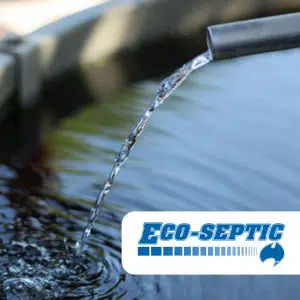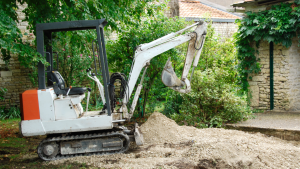What is a AWTS?
Where you have an unsewered area, household wastewater must be effectively treated on-site to preserve public health and the environment. An AWTS (Aerated Wastewater Treatment System) is one option for achieving this.
An AWTS is a special system for treating sewage and liquid waste from one or several dwellings. It incorporates a system of treatment chambers in combination with an irrigation system. It is an effective method of wastewater treatment in unsewered areas.
How does it work?
Household wastewater is treated in several stages across a number of separate chambers. The first chamber functions similarly to a conventional septic tank. The wastewater enters and sits so that the solids can settle at the bottom and form a layer of sludge. Meanwhile, scum collects at the surface while the partially-clarified wastewater moves into the next chamber.
Here, the wastewater is aerated to promote the growth of bacteria that further treats the contaminants. It then moves into a third chamber in which solids settle to be returned for further treatment in the septic and/or aeration chamber. Clarified effluent is disinfected in a final chamber before entering the irrigation system.
In the first chamber, bacteria break down solid matter in both the sludge and the scum. All material that cannot be broken down will gradually accumulate and must be pumped out periodically.
AWTS maintenance
To keep the system working effectively, regular maintenance is required. The following considerations are important:
- The system should be inspected and serviced 4 times per year.
- Desludge tanks every 3 years.
- Maintain disinfectant levels throughout the year.
- Avoid putting chemicals like bleach, disinfectants or whiteners into the system.
- Keep food waste and solid objects like wet wipes or nappies out of the system.
- Never switch off power to the AWTS.
Keeping water consumption down
It’s important to minimise water usage to avoid to problems occurring like overloading in an AWTS. If the system is overloaded, it may back up into your home or effluent might enter a nearby natural water source.
The key is to be conservative with your household water use. An AWTS is not built to process large volumes of water like multiple daily showers or several loads of laundry. Avoid subjecting it to these kinds of ‘shock loads’ by spreading water use evenly throughout the week.
Signs of trouble
There are certain signs to look out for that there might be a problem with an AWTS. If any of these problems occur, have them attended to immediately to ensure your health and the environment are protected:
- Slow-draining water
- Gurgling drain pipes
- Foul odours
- Water backing up
- Wastewater pooling in the land application space
- Noisy pumping equipment
Problems with odours could be serious and should be urgently addressed. Maintain your AWTS well and it should stay in good condition and do its job of protecting your health and the surrounding environment.
Eco-Septic is a Sydney based manufacturer and specialises in commercial wastewater systems of various shapes and designs. We can provide fast and free quotes relevant to your commercial wastewater needs, all while keeping in mind individual spending capabilities.
Contact us today for a fast quote at 1800 808 135 or visit us at www.ecoseptic.com.au.
We cover all Sydney suburbs as well as the regions of South Coast, Snowy Mountains, Southern Highlands, Riverina, Blue Mountains and Hawkesbury, Laguna, North and Mid North Coast, Bateman’s Bay, Nowra, Mallacoota, Narooma, Balmora, Cobargo, Glenn Ines, Avondale, Glenmore, Mogo, Targao, Torrumbarry, Albury, Faulconbridge, Maraylya, Sherbrooke, Strathdickie, Little Hartley, Linden, cattail, Bowen Mountain, Murrwillumbah, Kyogle, Bryon Bay, Lismore, Evan Heads, Yamba, Grafton and surrounding areas.p>
Related Posts
- How Does AWTS (Aerated Water Treatment System) Work?
- How To Make Sure You Have The Right Septic Tank For Your Home
- Are Aerated Wastewater Treatment Systems Expensive To Operate
- What are the different type of commercial wastewater treatment systems
- Why Eco Septic Tanks are the Eco-Friendly Choice for Your Home
- How do aerated wastewater treatment systems work
- Why Are There Heavy Metals In Sewage Sludge?
- Sustainable Septic Systems: Embracing Indigenous Wisdom for Modern Living





